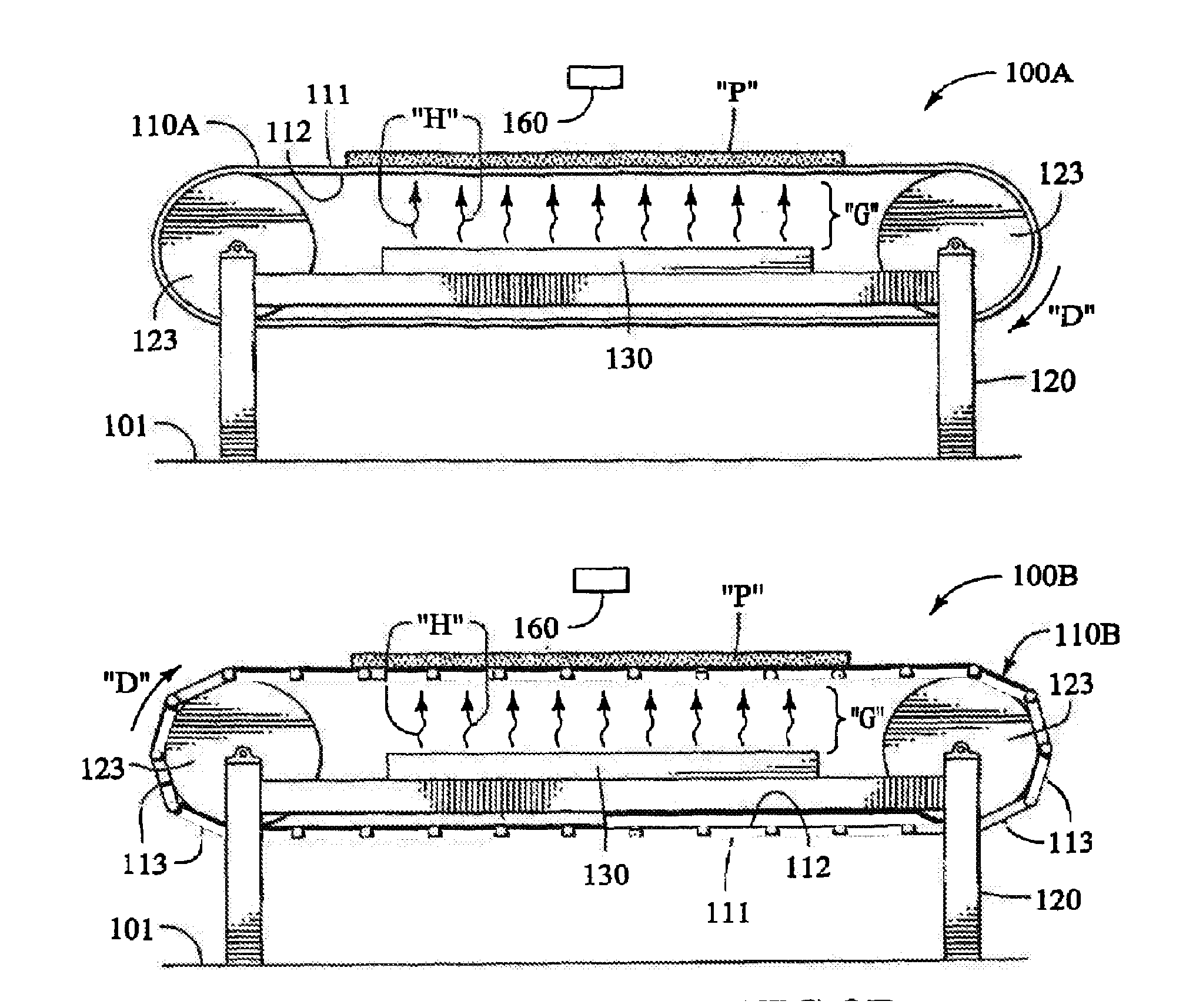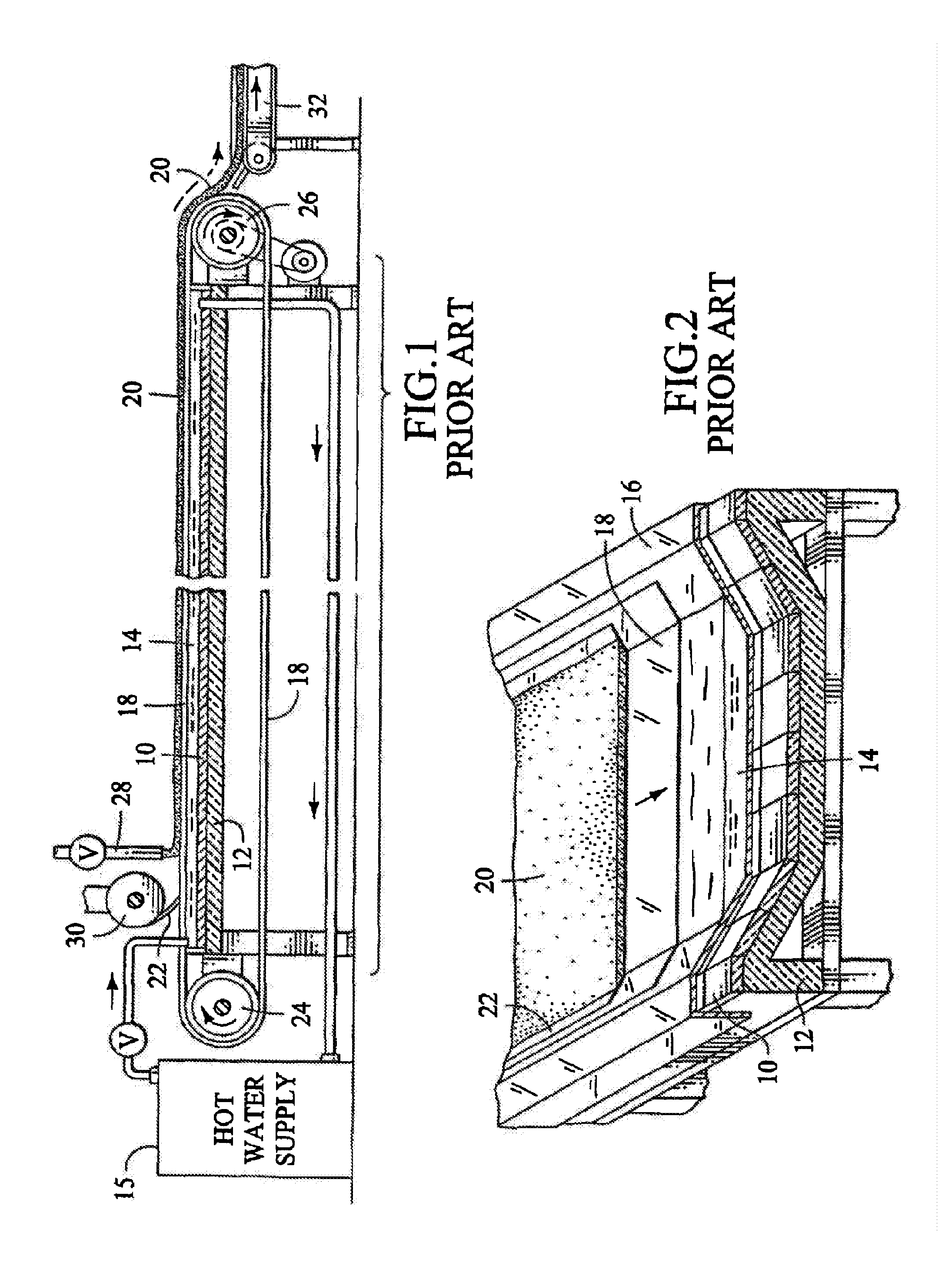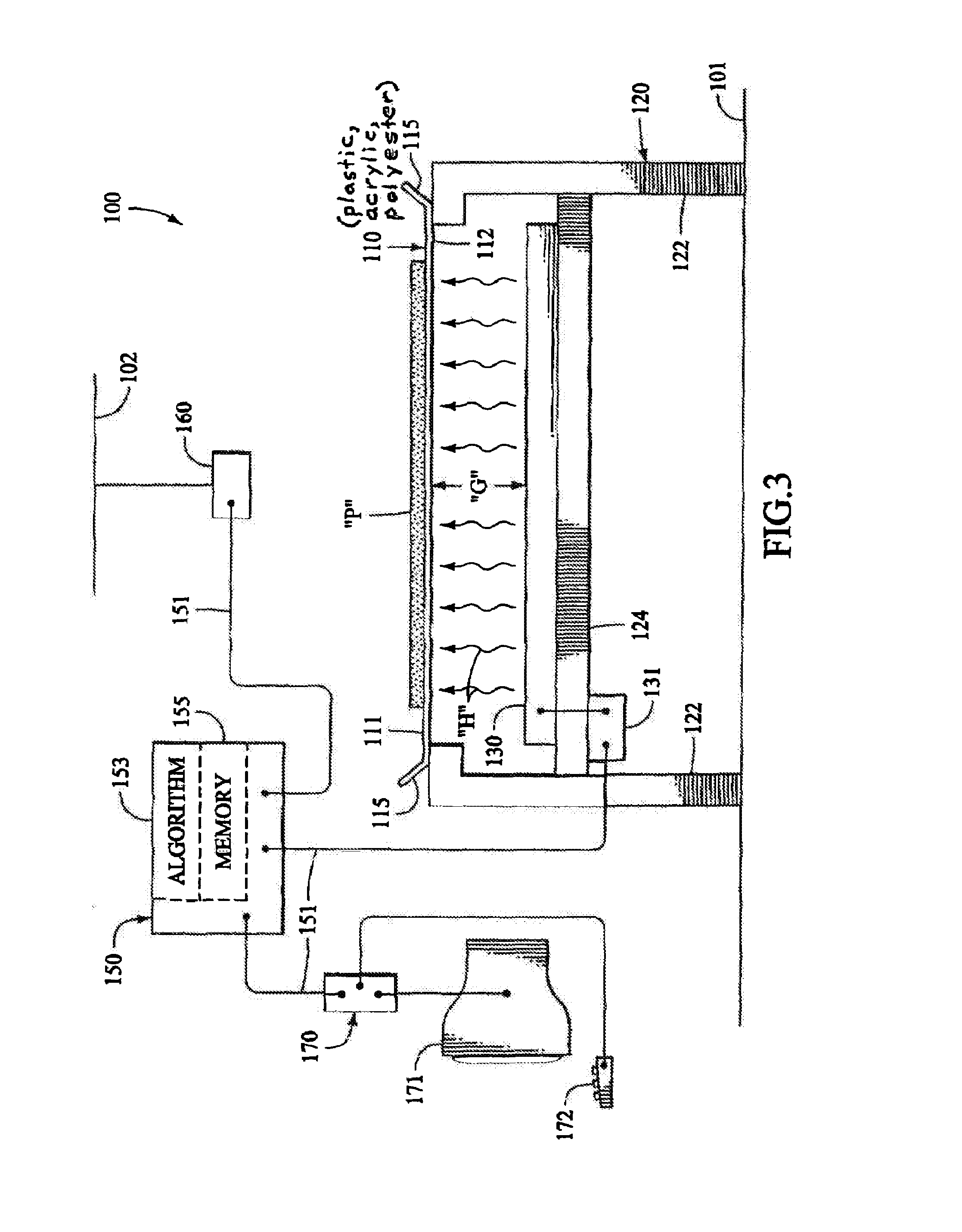Drying apparatus and methods
a technology of apparatus and product, which is applied in the direction of drying machines, lighting and heating apparatus, furnaces, etc., can solve the problems of inconvenient and troublesome use of the apparatus, low product quality, and relatively high production cost of freeze dryers, so as to increase or decrease the gap or spacing, the effect of maximizing the heat transfer ra
- Summary
- Abstract
- Description
- Claims
- Application Information
AI Technical Summary
Benefits of technology
Problems solved by technology
Method used
Image
Examples
example 1
Dehydrating Beet Juice Concentrate
[0193]Example 1 demonstrates the improved capacity that can be achieved by adjusting the position of the heaters relative to the product conveyor and the output of the heaters. In this example, a drying apparatus having 16 zones was used to dehydrate beet juice concentrate in a first drying run and a second drying run. The dehydrated beet juice concentrate was processed into powder form. Tables 1 and 2 show the zone settings of the dryer in the first and second runs, respectively. The heater distance in Tables 1 and 2 represents the distance between the heating elements and the conveyor in each zone. Table 3 show other dryer operating parameters and product characteristics for the first and second runs. The product set points across all zones (which determines the product temperature profile) were the same in each run. However, in the first drying run, the position of the heaters were manually adjusted prior to dryer operation in order to cause the ...
example 2
Dehydrating Fruit Puree Blend
[0197]In Example 2, a 16-zone dryer was used to dry a fruit puree blend comprising a mixture of grape puree and blueberry puree. The fruit puree blend was dried in four separate drying runs all having the same product temperature set points. The dehydrated fruit puree blend was processed into powder form. The first drying run (zone settings shown in Table 5) represents “baseline” operating conditions where the heating elements across all zones are set at the same distance from the conveyor. In the second drying run (zone settings shown in Table 6), the position of the heaters were kept the same as in drying run 1 but the rate of product applied to the conveyor was increased to increase the capacity of the dryer. In the third drying run (zone settings shown in Table 7), the position of the heaters were manually adjusted prior to dryer operation in order to cause the heaters to emit infrared radiation at or around 6.2 μm (corresponding to peak “C” in FIG. ...
PUM
 Login to View More
Login to View More Abstract
Description
Claims
Application Information
 Login to View More
Login to View More - R&D
- Intellectual Property
- Life Sciences
- Materials
- Tech Scout
- Unparalleled Data Quality
- Higher Quality Content
- 60% Fewer Hallucinations
Browse by: Latest US Patents, China's latest patents, Technical Efficacy Thesaurus, Application Domain, Technology Topic, Popular Technical Reports.
© 2025 PatSnap. All rights reserved.Legal|Privacy policy|Modern Slavery Act Transparency Statement|Sitemap|About US| Contact US: help@patsnap.com



